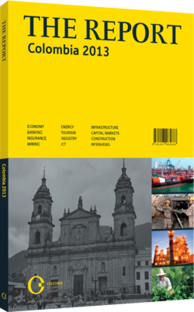OBG talks to Luis Carlos Sarmiento, President, Grupo Aval

Interview: Luis Carlos Sarmiento
What key factors have enabled Colombia’s ability to successfully navigate the global crisis?
LUIS CARLOS SARMIENTO: Regulation, banking prudence and, frankly, a bit of luck. This is a country that aggressively regulates banking. The vehicles that caused the global crisis were largely transactions not listed on companies’ balance sheets. In Colombia, such instruments have never been allowed. The country had a real estate crisis in 1998, but, given the strict regulation of banks’ balances, all the sector losses related to the crisis were realised immediately after the crash. This is entirely different from what happened during the 2008 global economic crisis, when it took much longer for some of the worst effects to become apparent.
Despite the complexity of regulation and new products and services, our balances tend to be very “plain vanilla”, still very much based in capturing deposits from the public and returning them, as loans, back to the public. As such, our balances are still quite simple to monitor and interpret because they do not have that overly sophisticated component.
Colombian banks did not have to rely on luck for expansion, as did many of the international banks that relied on problematic real-estate vehicles. Additionally, international banks simply never offered to sell the risky assets they were booking (before those went bad) in the Colombian market. This is the same reason that most Latin American banks escaped the crisis relatively unscathed.
What do you expect will be the greatest threats to Colombia’s banking system in 2013?
SARMIENTO: The only threat I see would be a deceleration in national growth. The consumption portfolio will not see the 25% gains as in 2012, and nor will the commercial portfolio expand as well as it did. We need to be sure the banks are prepared for a slowdown of the economy and adjust for the possible acceleration of delinquency rates. An increase in delinquency, starting in late 2011, carried into the first quarter of 2012, stabilising at around 3%. As I’ve always said, “enjoy the party, but make sure to clean the house.” This is a great moment to participate in the banking market and grow with it, but no market grows without limit.
How would you qualify the current level of banking penetration in Colombia?
SARMIENTO: The current level of banking penetration is at approximately 60%, which in my opinion means that the market is very underserved. We still haven’t seen the creation of the proper product through which the banking system can more effectively engage a population that has yet to tap into the banking system.
Many Colombians choose not to use the financial system for two reasons. First, the famous “one per 1000 pesos” tax collected by banks per transaction has now become “four per 1000.” Many believe this increase is an extra fee, not realising it is a tax that banks collect and return to the government. The second deterrent is a significant distrust of the financial system. For example, Colombians give little thought to providing mobile phone carriers with an income statement, digital fingerprint copies, an ID number and a signed blank promissory note. However, when banks ask for similar information, Colombians are much more sceptical. This makes mobile service providers the perfect vehicle to bring banking to the unbanked population. It’s just another cell phone application and makes up for banks’ inability to attract these clients on their own.
So technology will narrow the banking sector’s physical infrastructure gap?
SARMIENTO: Completely. People will see the process more as a cell phone transaction than as a banking one.
The regulations are already in effect – these smaller accounts don’t need to pay the four per 1000 tax or handling fees. Upon activating a mobile banking service, one can receive and direct payments through the phone. To physically see your cash, you can receive a PIN to your phone that can then be used at our ATMs.
You have reached the limit of premium articles you can view for free.
Choose from the options below to purchase print or digital editions of our Reports. You can also purchase a website subscription giving you unlimited access to all of our Reports online for 12 months.
If you have already purchased this Report or have a website subscription, please login to continue.

